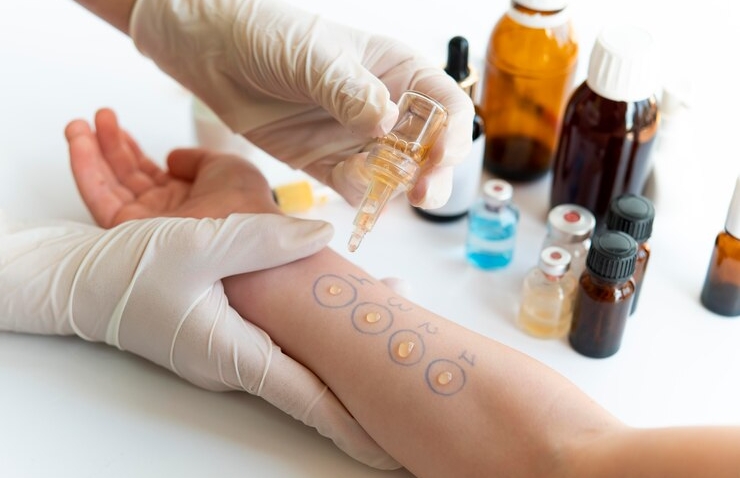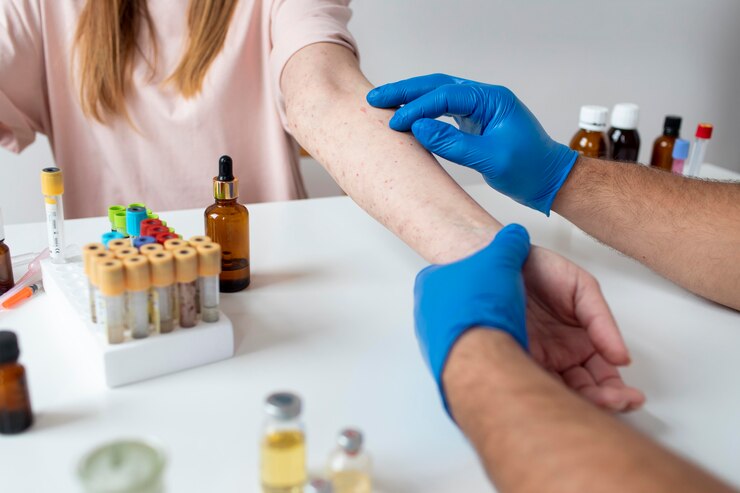In the complex landscape of allergies, understanding the specific triggers that set off immune responses is crucial for effective management and improved quality of life. Allergy tests serve as invaluable tools, providing insights into the substances responsible for allergic reactions.
This article serves as a comprehensive guide on how to perform allergy tests, exploring various methods such as skin prick tests, blood tests, elimination diets, and more.
Whether you’re seeking answers for seasonal allergies, food sensitivities, or environmental triggers, this guide will empower you to take control of your health by elucidating the step-by-step process of allergy testing.
The Importance of Allergy Testing
Living with allergies can be challenging, but pinpointing the exact culprits is the first step towards relief. Allergy testing plays a pivotal role in this process, providing valuable insights into the substances that trigger allergic reactions. By understanding your body’s specific sensitivities, you can make informed choices about your environment, diet, and lifestyle, ultimately improving your overall well-being.
Common Allergy Testing Methods
Skin Prick Test (SPT): The skin prick test is a widely used and effective method for identifying allergies. Small amounts of allergen extracts are applied to the skin, and a tiny needle is used to introduce them into the top layer. The development of raised bumps indicates an allergic response. This test is particularly useful for airborne allergens, such as pollen, pet dander, and dust mites.
Intradermal Test: In cases where the skin prick test results are inconclusive, or immediate hypersensitivity is suspected, the intradermal test may be employed. This test involves injecting a small amount of allergen beneath the skin using a thin needle, allowing for a more detailed assessment of the body’s reaction.
Patch Test: Patch testing is commonly used to identify allergens causing contact dermatitis. Small amounts of various allergens are applied to patches, which are then affixed to the skin for 48 hours. This method helps identify triggers like metals, fragrances, or latex that may cause skin reactions upon contact.
Blood Test (Allergy Blood Test or Specific IgE Test): For individuals who cannot undergo skin tests, or when skin conditions interfere with testing accuracy, a blood test may be recommended. This test measures the levels of specific antibodies (IgE) produced in response to allergens. It is particularly useful for identifying food allergies and respiratory allergens.

Elimination Diet: When food allergies are suspected, an elimination diet can be a practical approach. Specific foods are temporarily removed from the diet and reintroduced one at a time, allowing for the observation of any adverse reactions. This method helps identify food triggers and facilitates the development of an allergen-free diet.
Provocation Testing: Provocation testing involves controlled exposure to a suspected allergen in a supervised environment. This method is typically reserved for cases where other tests are inconclusive or when a specific allergy is strongly suspected. Careful monitoring during the provocation helps assess the body’s response and confirm the presence of an allergy.
Cost Considerations for Allergy Testing
While understanding the various allergy testing methods is crucial, it’s also important to consider the associated costs for required tests, check this page for average prices. The expenses for allergy testing can vary based on the method chosen, the healthcare provider, and the location. In general, skin prick tests and blood tests are commonly covered by health insurance plans, but it’s advisable to check with your insurance provider to understand the extent of coverage.
Elimination diets may involve additional costs associated with dietary adjustments and potential consultations with nutritionists or dietitians. Provocation testing, being a more specialized procedure, may also incur higher expenses, and it’s essential to discuss the potential costs with your healthcare provider beforehand.
Consulting with a Healthcare Professional
It’s crucial to emphasize that allergy testing should be conducted under the guidance of trained healthcare professionals. Allergists or immunologists are equipped to interpret test results in the context of an individual’s medical history and symptoms. They can provide personalized advice on managing allergies, including lifestyle modifications, environmental changes, and, if necessary, prescription medications.
Conclusion
In conclusion, allergy testing is a valuable tool for anyone seeking to understand and manage their allergies effectively. Whether it’s through skin tests, blood tests, elimination diets, or provocation testing, identifying specific allergens empowers individuals to make informed decisions about their health.
Consulting with a healthcare professional ensures that the testing process is conducted accurately and that the results are interpreted in a way that guides effective allergy management. Ultimately, the goal of allergy testing is to enhance the quality of life for individuals living with allergies by minimizing exposure to triggers and facilitating appropriate treatment.
